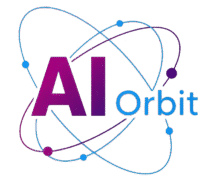THE DAWN OF AI-GENERATED VIDEO GAMES: RUNWAY’S NEXT FRONTIER
The landscape of digital content creation is undergoing a profound transformation, with artificial intelligence emerging as a pivotal force. While generative AI has already made significant inroads in various sectors, its application in creative industries, particularly film and television, has been nothing short of revolutionary. Leading this charge is Runway, a company that has redefined visual effects and production workflows in Hollywood. Now, this innovative firm is setting its sights on another colossal industry: video games. This strategic pivot promises to unlock unprecedented possibilities for game developers and players alike, potentially democratizing game creation and accelerating development cycles in ways previously unimaginable.
FROM HOLLYWOOD HITS TO GAMING INNOVATION
Runway’s reputation was primarily forged in the demanding crucible of the film industry. With a valuation of $3 billion, the company has become synonymous with cutting-edge generative AI models that empower filmmakers to create complex visual elements, alter scenes, and streamline post-production processes. Its technology has been adopted by major studios, with CEO Cristóbal Valenzuela proudly noting collaborations with “pretty much every major studio” and a substantial number of Fortune 100 companies. A testament to its impact is the integration of Runway’s technology in productions like Amazon’s “House of David,” where AI-driven tools likely contributed to faster, more efficient content generation. This success in Hollywood isn’t just about special effects; it’s about a fundamental shift in how creative content is produced, making the process more agile and cost-effective. The ability to generate intricate video sequences and realistic imagery has direct parallels to the needs of game development, where high-quality assets, environments, and animations are constant demands. Runway’s expertise in generating consistent scenes and character movements from simple prompts positions it uniquely to address these challenges within the gaming ecosystem, drawing on its established track record in film.
THE PROMISE OF AI-GENERATED GAMES
The notion of AI-generated video games goes far beyond mere procedural content, which has been a staple in game development for decades. Runway’s ambition is to empower users to create fully interactive gaming experiences. While the initial consumer-facing product, accessible via play.runwayml.com, started as a barebones chat interface supporting text and image generation, the vision extends to enabling the creation of entire video games later in 2025. This means a shift from generating static assets to dynamic, playable environments with interactive elements, game logic, and narrative progression dictated by AI. Imagine typing a prompt like “create a cyberpunk detective game set in a rainy neon city with branching storylines and challenging puzzles,” and having a playable prototype generated in moments. This level of automation could radically shorten development timelines, allowing for rapid prototyping, endless content variations, and personalized gaming experiences. For indie developers, this could lower the barrier to entry significantly, enabling small teams or even individuals to produce high-fidelity games without extensive programming or artistic skills. The potential for AI to design unique mechanics, balance gameplay, and even adapt to player behavior opens up entirely new frontiers for what games can be, fostering unparalleled creative freedom.
RUNWAY’S STRATEGIC PLAY IN THE GAMING ARENA
Runway’s foray into gaming is not merely a technical expansion; it’s a strategic move built on observed industry patterns. CEO Cristóbal Valenzuela draws a compelling parallel between the current state of the gaming industry and Hollywood’s initial encounter with generative AI. Both sectors, despite their innovative spirit, tend to approach radical technological shifts with a degree of skepticism or resistance. However, as AI demonstrated its tangible benefits in film production, its adoption became inevitable. Valenzuela asserts that the gaming industry is “waking up, and they’re moving faster than I would say the studios were moving two years ago,” indicating a quicker embrace of AI tools. Runway is actively engaging in discussions with established gaming companies, exploring avenues for both licensing its technology for integration into existing game development pipelines and accessing proprietary datasets for training its advanced models. This dual approach signifies a commitment to becoming an indispensable tool for game studios, much like it has become for film production houses. The promise of making games “40 percent faster” directly addresses one of the most pressing challenges in the industry: rising development costs and prolonged production cycles. By automating laborious tasks and accelerating content generation, Runway aims to provide a significant competitive advantage to developers of all scales.
THE TECHNICAL UNDERPINNINGS: HOW AI WILL SHAPE GAME CREATION
While the specifics of Runway’s gaming AI are still unfolding, its foundation likely lies in advanced generative models similar to those used for video generation. These include sophisticated versions of Generative Adversarial Networks (GANs) or diffusion models, trained on massive datasets of existing games, digital assets, and interactive simulations. The core capability involves translating high-level textual or visual prompts into functional game elements. This could encompass:
- Environment Generation: Creating realistic or stylized 3D environments, including terrains, buildings, and natural elements, based on descriptive inputs.
- Asset Production: Automatically generating textures, 3D models, character designs, animations, and sound effects, significantly reducing manual labor.
- Game Logic & Mechanics: AI models could learn common gameplay patterns, rule sets, and physics engines to generate basic game logic, quests, and interactive scenarios.
- Narrative & Dialogue: Developing dynamic storylines, character backstories, and contextual dialogue that adapts to player choices.
- Procedural Level Design: Moving beyond static levels to generate complex, varied, and replayable level layouts, puzzles, and enemy placements on the fly.
The challenge lies not just in generating assets, but in creating cohesive, playable experiences that adhere to intricate game design principles and user expectations. This requires AI to understand not just aesthetics but also functionality, playability, and performance within a game engine environment. Runway’s success will depend on its ability to bridge this gap, translating creative intent into engaging interactive experiences that resonate with players.
CHALLENGES AND ETHICAL CONSIDERATIONS
The advent of AI in game creation, while promising, is not without its complexities and ethical dilemmas. One of the most significant concerns revolves around data privacy and copyright. For AI models to be effective, they require vast amounts of training data, often sourced from existing games, art, and intellectual property. This raises critical questions about fair use, compensation for creators whose work informs these models, and the potential for AI-generated content to inadvertently mimic copyrighted material. Ensuring that Runway’s models are trained ethically and responsibly, respecting intellectual property rights, will be crucial for its long-term success and industry acceptance.
Another major challenge is quality control and artistic vision. While AI can generate content rapidly, maintaining a consistent artistic style, narrative coherence, and high-quality gameplay experience across an entire game can be difficult. Developers will need robust tools to refine, curate, and override AI-generated elements to ensure the final product aligns with their unique creative vision. The risk of generic or uninspired outputs exists if not carefully managed by human oversight.
Furthermore, the discussion inevitably turns to job displacement. As AI automates tasks previously performed by artists, designers, and even programmers, concerns arise about the future roles of human creators in the industry. The optimistic view suggests AI will augment human creativity, freeing developers from repetitive tasks to focus on more innovative aspects. However, the exact impact on employment remains a critical point of debate that the industry must navigate carefully.
Finally, the “barebones” nature of Runway’s initial offering highlights the need for managed expectations. While the long-term vision is compelling, the journey from text-to-image to full game generation is complex and will require significant iterative development, user feedback, and technological breakthroughs.
THE INDEPENDENCE EDGE: WHY RUNWAY IS GOING SOLO
In an era where major tech giants are aggressively acquiring promising AI startups, Runway’s decision to maintain its independence is a significant strategic choice. CEO Cristóbal Valenzuela publicly stated his preference for independence, citing “more interesting intellectual challenges being independent, and remaining independent for now,” even after engaging in acquisition talks with companies like Meta. This choice reflects a desire for greater autonomy and the freedom to pursue a specific long-term vision without the constraints of corporate integration.
The benefits of remaining independent for a company like Runway are manifold:
- Agility and Focus: Without the bureaucratic overhead often associated with larger corporations, Runway can remain nimble, rapidly iterate on its technology, and focus intensely on its core mission of empowering creative expression through AI.
- Broader Partnerships: As an independent entity, Runway can collaborate with a wider range of partners across Hollywood, gaming, and other industries without perceived conflicts of interest that might arise if it were owned by a specific studio or tech conglomerate.
- Talent Attraction: For many top AI researchers and engineers, the appeal of working on groundbreaking, independent projects can outweigh the stability of a large company, allowing Runway to attract and retain cutting-edge talent.
- Control Over IP: Remaining independent allows Runway to maintain full control over its valuable intellectual property and its future development roadmap.
This autonomy positions Runway as a neutral, foundational technology provider, enabling it to influence and innovate across diverse creative ecosystems, free from the dictates of a larger corporate agenda.
CONCLUSION: A NEW PARADIGM FOR GAME DEVELOPMENT
Runway’s expansion into the gaming industry marks a significant milestone in the evolution of AI’s role in creative fields. By leveraging its proven expertise in generative AI for film, Runway aims to introduce efficiencies and creative possibilities that could fundamentally reshape how video games are conceived, designed, and produced. While challenges related to intellectual property, quality assurance, and the human element in creativity remain, the potential for faster development cycles, increased accessibility for creators, and the generation of novel interactive experiences is immense. Cristóbal Valenzuela’s foresight and Runway’s commitment to independent innovation suggest that the gaming world is on the cusp of a transformative period. As AI models become more sophisticated and integrated into development pipelines, the line between human creation and algorithmic generation will increasingly blur, paving the way for a future where virtually anyone can bring their wildest game ideas to life. The coming years will undoubtedly demonstrate the full extent of AI’s power to unlock new dimensions of play, forever changing the landscape of interactive entertainment.

